
Fairlee is a town in Orange County, Vermont, United States. The population was 988 at the 2020 census. It includes the village of Ely. Fairlee is home to Lake Morey, which claims to have the longest ice skating trail in the United States.

Founded in 1885 by Sumner F. Dudley, Camp Dudley is the oldest continually running boys camp in the United States. It is located in Westport, New York, on the shores of Lake Champlain. In 1993, it was included within the Camp Dudley Road Historic District when listed on the National Register of Historic Places.
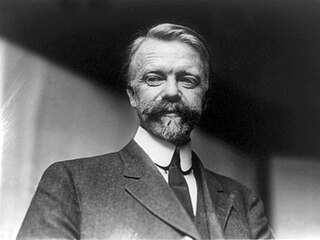
Luther Halsey Gulick Jr. (1865–1918) was an American physical education instructor, international basketball official, and founder with his wife of the Camp Fire Girls, an international youth organization now known as Camp Fire.

Camp Billings is a co-ed, summer camp on Lake Fairlee in West Fairlee and Thetford, Vermont, United States. Accredited by the American Camp Association, it was established in 1906, and is open by boys and girls between the ages of eight and sixteen. In 2006, it was listed as a historic district on the National Register of Historic Places.
Carnage is a multi-genre table-top gaming convention based in the Upper Valley of Vermont / New Hampshire. It typically covers all genres of tabletop gaming, like board games, role-playing games, CCGs, LARPs and historical and fantasy miniatures.
The Alice Beck Cabin, also known as the John T. Robinson Cabin, is a recreational cabin on the eastern shore of Lake McDonald in Glacier National Park, Montana. The cabin was built around the year 1910, which was the same time that a number of other summer camps were built, and was also prior to the establishment of the park itself. Once the park was designated, the cabin has remained as a private inholding.

Camp Ossipee is an historic private summer camp in Holderness, New Hampshire. Located on Porter Road on the shores of Squam Lake, it consists of two adjacent family camps owned by the Porter and Hurd families. The older of the two camps was built in 1902, and features an electric railroad to bring supplies to the camp from the road. The camp was listed on the National Register of Historic Places in 2012.

The Samuel Morey Memorial Bridge is a historic bridge carrying New Hampshire Route 25A across the Connecticut River between Orford, New Hampshire and Fairlee, Vermont. The steel through-arch bridge was built in 1937–38 to replace an older wooden bridge which had been damaged by flooding in 1936. It spans 432 feet (132 m), stands about 35 feet (11 m) above the river, and its arches rise 85 feet (26 m) above the roadway. It rests on poured concrete abutments that have a light Art Deco or Moderne styling. Wing walls recede from the abutments into the banks in three stepped sections. Below the bridge in the river is visible some riprap, stone remnants of the old bridge's abutments and central pier. The bridge is of a "tied arch" design, in which the two arches are joined together by ties to distribute the active load. This is in contrast to the Justice Harlan Fiske Stone Bridge joining Brattleboro, Vermont and Chesterfield, New Hampshire, which was built about the same time, and distributes the active load to its abutments. The bridge components were manufactured by the American Bridge Company; construction was by Hagen-Thibodeau Construction Company at a contracted cost of just over $209,000.
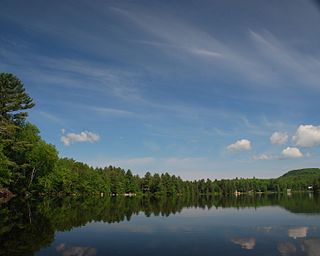
Ricker Pond State Park is a state park in Groton, Vermont in the United States. It is one of seven state parks located in Groton State Forest. The park is just off Vermont Route 232. The park provides public access to Ricker Pond, a 95-acre (38 ha) lake in central Groton, and was developed in the 1930s by crews of the Civilian Conservation Corps. Activities includes camping, motor boating, waterskiing, fishing, swimming, paddling, horseback riding, hiking, mountain biking, snowshoeing and cross-country skiing. The park is open between the Memorial Day and Columbus Day weekends; fees are charged for day use and camping.

Aloha Hive Camp is a summer camp for girls on Lake Fairlee in West Fairlee, Vermont. Founded in 1915 as an expansion of Aloha Camp, it is open to girls aged 7 to 12, with two sessions between mid-June and late August. The camp operates on more than 400 acres (160 ha), offering a variety of outdoor activities as well as a rich arts and crafts program. The camp facilities were listed on the National Register of Historic Places in 2003.
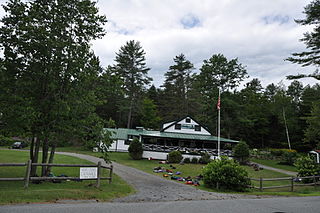
Aloha Horizons Camp is a summer camp for boys and girls on Lake Fairlee in West Fairlee, Vermont. Opened in 1921 as Camp Wyoda, its property was acquired by the Aloha Foundation in 1997, and is now operated by that organization as a day camp for local children and vacationers staying in the area. Camp is divided into three two-week sessions; activities include water sports, land sports, and arts and crafts. The camp property, organized around a former farmstead, was listed on the National Register of Historic Places in 2003 for its well-kept collection of surviving early camp architecture.
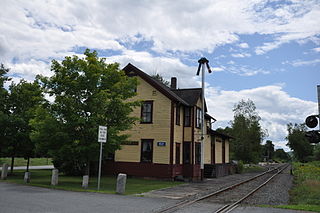
The Ely Railroad Depot is a historic railroad station at Ely Road and Old Route 5 in Fairlee, Vermont. Built in 1900 by the Boston and Maine Railroad, it is a well-preserved rural station, designed to house the stationmaster as well as providing station facilities. It was listed on the National Register of Historic Places in 1994.
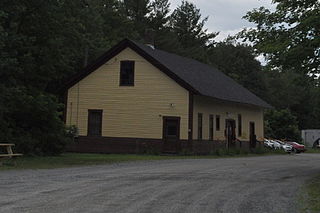
The Fairlee Railroad Depot is a historic railroad station at 320 United States Route 5 in the village center of Fairlee, Vermont. Built in 1848 and used in active service until 1972, it is one of the few surviving first-generation railroad station buildings in the state. Now used as a retail space, it was listed on the National Register of Historic Places in 1998.

Fairlee Town Hall, at 75 Town Common Road, is the municipal heart of Fairlee, Vermont. It was built in 1913 to a design by a local architect, replacing the old Fairlee Opera House, which was destroyed by fire in 1912. It is a fine example of Colonial Revival architecture, and is a focal point of the village center and the town's civic life. It was listed on the National Register of Historic Places in 2014.

Lanakila Camp is a private summer camp for boys aged 8-14 on Lake Morey in Fairlee, Vermont. Founded in 1922 on the grounds of a 19th-century farm property, it is one of the state's older organized camps, with a significant number of period buildings in the Adirondack rustic style. The camp offers an array of outdoor activities, including water, field sports, and hiking, as well as indoor arts programs, all generally infused with an educational purpose. It has a full 7-week session, as well as two three-and-a-half-week sessions. During the off-season, its facilities are used as the Hulbert Outdoor Center, an educational center for adults, children, school groups and special events including things like weddings. The camp property was listed on the National Register of Historic Places in 2003.

The Asa May House is a historic farmstead on Blood Brook Road in West Fairlee, Vermont. Developed in the late 18th century, the c.1800 house is a rare statewide example of Federal period architecture, built for West Fairlee's first town clerk. The farmstead property, including a barn, sheds, and period landscape elements, was listed on the National Register of Historic Places in 1993.
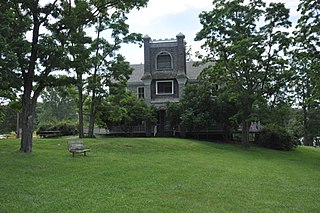
The Hawley's Ferry House, also known just as the Hawley House, is a historic house on the shore of Lake Champlain in Kingsland Bay State Park, Ferrisburgh, Vermont. Built about 1790, it is one of the few surviving 18th-century buildings on the Vermont side of the lake. It was listed on the National Register of Historic Places in 1978.
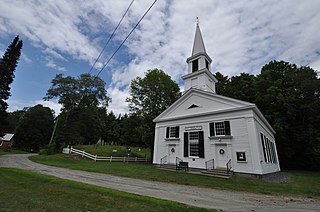
The West Fairlee Center Church is a historic church building at Middlebrook and Bear Notch Roads in West Fairlee, Vermont. Built in 1855, it is a fine and little-altered example of rural Greek Revival architecture, also notable for the association of its congregation with Nathaniel Niles, a prominent local minister, landowner, and politician. It was listed on the National Register of Historic Places in 2002.

Fox Hall is a historic summer estate house in Westmore, Vermont. Built about 1900 by the then-mayor of Yonkers, New York, it was the first major summer resort property built in the remote town on the shores of Lake Willoughby. It is architecturally a distinctive blend of Colonial Revival and the Shingle style; the latter is a particularly uncommon style for northern Vermont. The house, along with a period icehouse, was listed on the National Register of Historic Places in 1984.
Camp Marbury was a summer camp for girls on Lake Champlain in Ferrisburgh, Vermont. Founded in 1921, the family-run camp operated until 1942, when it closed due to logistical difficulties associated with World War II. The camp property is listed on the National Register of Historic Places.




















